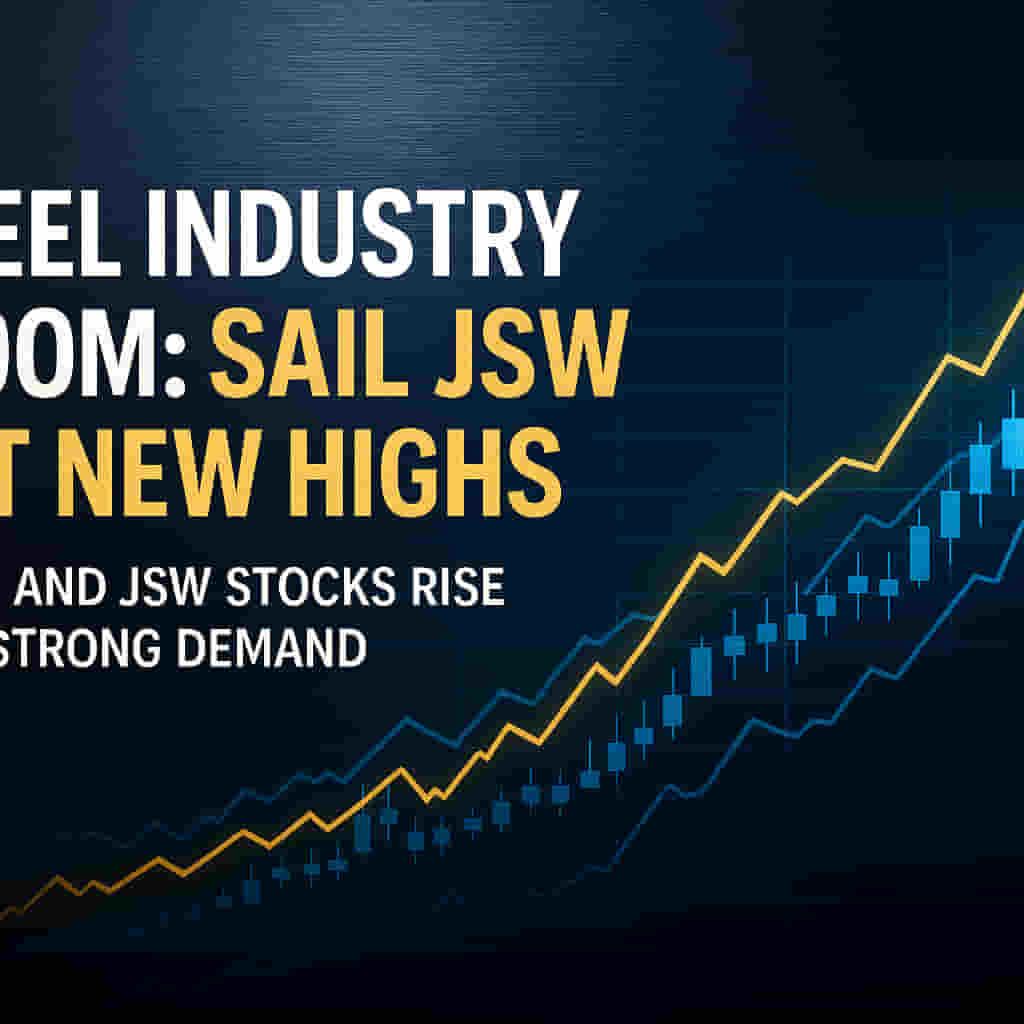Indian Steel Sector Attracts Investor Interest Amidst Safeguard Duty and Mixed Company Results
Industrial Goods/Services
|
1st November 2025, 1:56 AM

▶
Stocks Mentioned :
Short Description :
Detailed Coverage :
Renewed investor interest is evident in India's steel sector, bolstered by the central government's imposition of a 12% safeguard duty aimed at protecting the domestic industry from cheaper imports, particularly from East Asian countries. This measure appears to be effective, as India's steel imports fell to 4.9 million tonnes in the first half of FY26, down from 5.78 million tonnes in the same period last year. Stocks of leading steel manufacturers such as Steel Authority of India Limited (SAIL) and JSW Steel are trading close to their respective 52-week highs, reflecting positive market sentiment.
In terms of company performance for the September 2025 quarter: SAIL reported an 8.2% year-on-year growth in standalone revenue to Rs 26,703.9 crore, with steel product sales volume increasing to 4.9 million tonnes from 4.1 million tonnes a year earlier. However, price realisations per tonne decreased by nearly 9% year-on-year. Higher input costs and changes in inventory led to a 230 basis points decline in its core operating profit margin to 9.5%, resulting in a nearly 49% year-on-year drop in standalone net profit.
JSW Steel, on the other hand, posted a consolidated revenue growth of 13.8% year-on-year to Rs 45,152 crore. Consolidated sales volume rose by 19.7% to 7.34 million tonnes, driven by optimal plant operations and enhanced output from subsidiaries. Despite a nearly 5% year-on-year fall in realisations, JSW Steel's consolidated operating profit margin increased by 210 basis points to 15.8%, attributed to stringent cost control measures. This led to a substantial jump of nearly 307% year-on-year in consolidated net profit to Rs 1,646 crore.
Regarding capital expenditure (Capex) plans, JSW Steel is aggressively expanding, with consolidated Capex of Rs 6,535 crore in H1 FY26 and an expected spend of Rs 20,000 crore in FY26. Expansion plans include increasing its cold rolled grain oriented (CRGO) electrical steel capacity significantly. SAIL has envisaged phase-1 expansion of its integrated steel plants to enhance steel capacity from nearly 19 million tonnes to 35 million tonnes by 2030-31, with a planned Capex of Rs 7,500 crore for FY26.
Valuations show SAIL trading at a P/E ratio of over 20 times, while JSW Steel trades at over 48 times, indicating that growth opportunities are largely factored into current stock prices. Investors will closely monitor global steel prices and import trends. A pick-up in user industries like auto and construction in the latter half of FY26 is expected to further support the sector.
Impact This news significantly impacts the Indian stock market, particularly the steel sector. The safeguard duty provides a protective environment for domestic producers, potentially boosting sales and profitability. JSW Steel's strong performance highlights effective operational management, while SAIL's challenges underscore the impact of cost pressures and realisation dips. Future growth will depend on successful execution of capex plans and demand from end-user industries. Rating: 7/10
Difficult Terms: Safeguard Duty. A temporary tariff imposed on imports to protect domestic industries from a sudden surge in imports that could harm them. Dalal Street. The colloquial name for the Indian stock market, particularly the Bombay Stock Exchange (BSE) and National Stock Exchange (NSE) located in Mumbai. 52-week high. The highest price a stock has traded at over the past 52 weeks (one year). Price Realisations. The average selling price received by a company for its products. Standalone Revenue. Revenue generated by a company from its own operations, excluding any subsidiaries. y-o-y. Year-on-year, comparing a period (like a quarter) to the same period in the previous year. Input Costs. The expenses incurred by a company to produce its goods or services (e.g., raw materials, energy). Core Operating Profit Margin. A measure of profitability showing profit before interest, taxes, depreciation, and amortization, as a percentage of revenue. Basis Points. One-hundredth of a percentage point (0.01%). 230 basis points = 2.3%. Consolidated Revenue. The total revenue of a parent company and its subsidiaries combined. Optimum Capacity. Operating at the most efficient level of production. Planned Maintenance Shutdown. Temporary closure of a plant for essential repairs and upkeep. Enhanced Output. Increased production. Mining Premium and Royalties. Payments made for the right to extract minerals, often based on revenue or volume. Return on Capital Employed (ROCE). A profitability ratio that measures how efficiently a company is using its capital to generate profits. Capital Expenditure (Capex). Funds used by a company to acquire, upgrade, and maintain physical assets like property, buildings, and equipment. Cold Rolled Grain Oriented (CRGO) Electrical Steel. A specialized type of steel used in electric transformers and motors, valued for its magnetic properties. Integrated Steel Plants. Facilities that handle all stages of steel production, from raw materials to finished products. GST Rate Cut. Reduction in the Goods and Services Tax rate. P/E Ratio (Price-to-Earnings Ratio). A valuation metric comparing a company's stock price to its earnings per share. A higher P/E might suggest growth expectations.